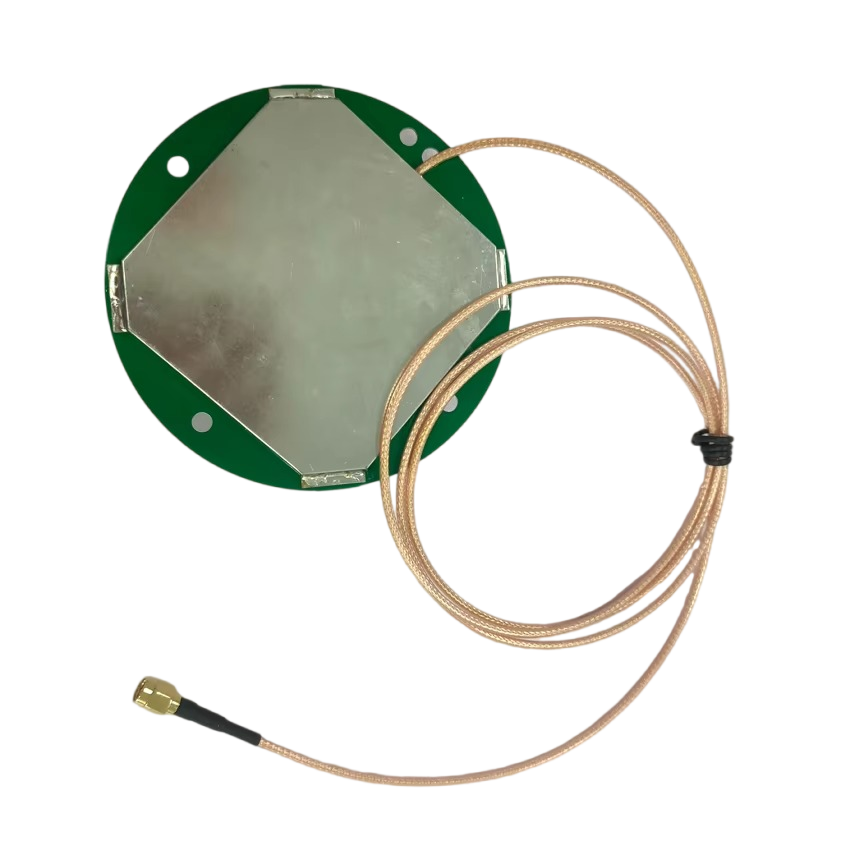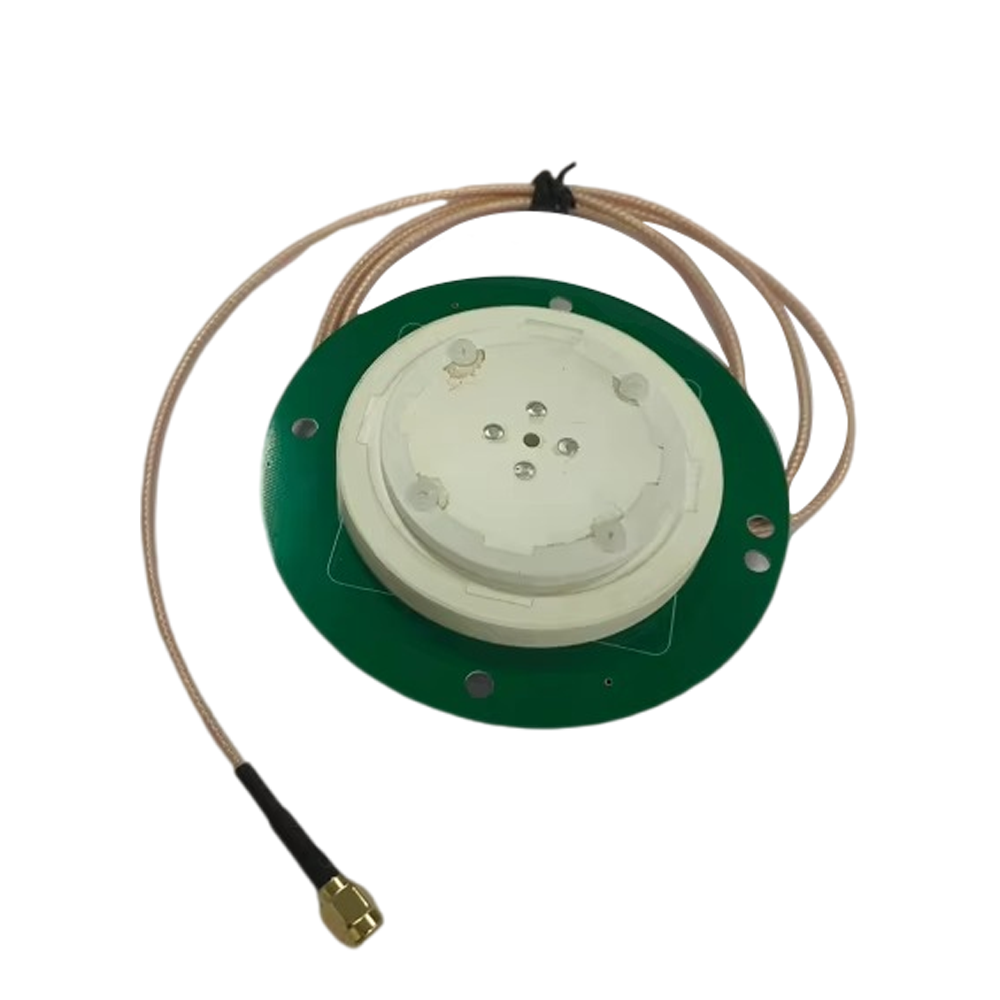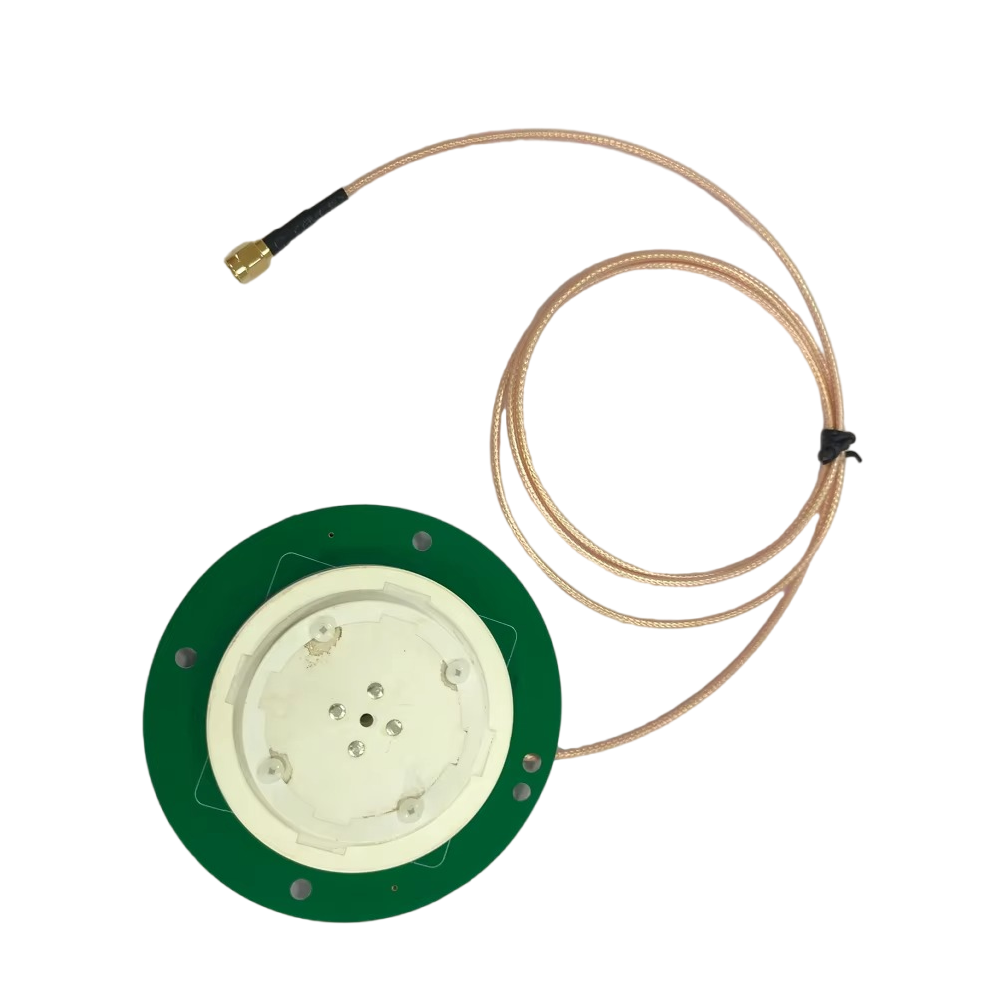The RTK Combination Antenna for Simultaneous GPS has a wide range of applications across various industries, thanks to its high-precision positioning capabilities, reliable signal reception, and robust design. As technology continues to advance, new applications are emerging, and future trends are shaping the development of this antenna. This section explores the current applications of the antenna and the key trends that will drive its evolution in the coming years.
5.1 Current Applications: Transforming Industries with High-Precision Positioning
5.1.1 Surveying and Mapping
Surveying and mapping is one of the oldest and most established applications of the RTK Combination Antenna for Simultaneous GPS. Surveyors rely on high-precision positioning to create detailed topographic maps, mark property boundaries, and align infrastructure projects such as roads, bridges, and buildings. The centimeter-level accuracy of the RTK combination antenna allows surveyors to collect data quickly and efficiently, reducing the time and labor required for traditional surveying methods.
For example, in the construction of a new highway, surveyors use the antenna to mark the alignment of the highway corridor with centimeter-level precision. This ensures that the road is built according to the design plans, minimizing the risk of costly rework. In topographic mapping, surveyors use the antenna to collect elevation data across large areas. By walking or driving with a rover equipped with the antenna, they can record thousands of data points per hour, which are then used to create 3D maps of the terrain. This is particularly useful for environmental monitoring, where changes in the landscape—such as erosion or deforestation—can be tracked over time with high accuracy.
Another key application in surveying is cadastral surveying, which involves defining and marking property boundaries. The RTK Combination Antenna for Simultaneous GPS allows surveyors to determine the exact location of boundary markers, reducing disputes between property owners. In urban areas, where space is limited and property values are high, this level of accuracy is essential for ensuring that buildings and other structures are constructed within the correct property lines.
5.1.2 Precision Agriculture
Precision agriculture is a rapidly growing application of the RTK Combination Antenna for Simultaneous GPS, as farmers seek to improve crop yields, reduce costs, and minimize environmental impact. The antenna is used in a variety of agricultural machinery, including tractors, harvesters, and sprayers, to enable precise positioning and navigation.
One of the most common uses of the antenna in precision agriculture is for "variable-rate application" (VRA). VRA involves applying fertilizers, pesticides, and seeds at different rates across a field based on the specific needs of each area. For example, a farmer may use soil sensors to determine the nutrient levels in different parts of the field. The RTK combination antenna provides the precise positioning data needed to map these nutrient levels and control the application rate of the machinery. This ensures that areas with low nutrient levels receive more fertilizer, while areas with high nutrient levels receive less, reducing waste and improving crop yields.
The antenna is also used for "autonomous steering" of agricultural machinery. Autonomous steering systems use the GPS positioning data from the antenna to guide the tractor or harvester along a pre-defined path with centimeter-level accuracy. This eliminates the need for the farmer to manually steer the machinery, reducing operator fatigue and improving efficiency. For example, a farmer can program a path for a tractor to plow a field, and the autonomous steering system will ensure that the tractor stays on course, even when the field is uneven or has obstacles.
In addition, the RTK Combination Antenna for Simultaneous GPS is used for crop scouting and yield mapping. Farmers can use a UAV equipped with the antenna to capture high-resolution images of the field. The GPS data from the antenna is used to geotag these images, allowing the farmer to identify areas of the field that are underperforming. Yield mapping involves using the antenna to track the position of a harvester as it collects crops. The harvester's yield monitor records the amount of crop harvested at each position, and the GPS data from the antenna is used to create a map of the yield across the field. This information can be used to identify factors that affect yield, such as soil quality or irrigation issues.
5.1.3 Autonomous Transportation
Autonomous transportation—including self-driving cars, trucks, buses, and drones—is one of the most exciting and rapidly evolving applications of the RTK Combination Antenna for Simultaneous GPS. The high-precision positioning provided by the antenna is essential for the safe and reliable operation of autonomous vehicles, as it allows them to navigate through complex environments and avoid obstacles.
In self-driving cars, the RTK Combination Antenna for Simultaneous GPS is used in conjunction with other sensors—such as cameras, lidar, and radar—to provide a comprehensive view of the vehicle's surroundings. The GPS data from the antenna is used to determine the vehicle's position on the road with centimeter-level accuracy, which is critical for tasks such as lane keeping, merging, and navigating intersections. For example, when a self-driving car approaches an intersection, the GPS data from the antenna is used to confirm the vehicle's position relative to the stop line and other vehicles, ensuring that the car stops or proceeds safely.
The antenna is also used in autonomous trucks for long-haul transportation. Autonomous trucks rely on high-precision positioning to navigate along highways and deliver goods to their destinations. The RTK combination antenna provides the positioning data needed to keep the truck in its lane, maintain a safe distance from other vehicles, and exit the highway at the correct ramp. In addition, the antenna's ability to receive multiple GPS signals simultaneously ensures that the truck maintains accurate positioning even in areas with poor satellite visibility, such as tunnels or urban canyons.
Drones, or unmanned aerial vehicles (UAVs), are another important application of the RTK Combination Antenna for Simultaneous GPS. Drones are used for a wide range of tasks, including aerial photography, mapping, inspection, and delivery. The high-precision positioning provided by the antenna allows drones to hover in place, fly along pre-defined paths, and land accurately. For example, a drone used for inspecting power lines can use the antenna to position itself precisely next to the power line, allowing the operator to capture detailed images of the line's condition. In delivery applications, the antenna ensures that the drone can land safely at the delivery location, even in areas with obstacles or changing weather conditions.
5.1.4 Marine and Offshore Operations
The RTK Combination Antenna for Simultaneous GPS is widely used in marine and offshore operations, where accurate positioning is essential for safety, efficiency, and compliance with regulations. Marine applications include navigation of ships, offshore oil and gas exploration, and hydrographic surveying.
In ship navigation, the antenna provides the precise positioning data needed to ensure that ships stay on course and avoid collisions with other vessels, reefs, or other hazards. The centimeter-level accuracy of the antenna is particularly important in narrow waterways, such as canals or harbors, where there is little room for error. For example, a large container ship navigating through the Panama Canal relies on the RTK combination antenna to maintain its position in the center of the canal, avoiding damage to the ship or the canal walls.
Offshore oil and gas exploration and production also rely heavily on the RTK Combination Antenna for Simultaneous GPS. The antenna is used to position drilling rigs, production platforms, and support vessels with high accuracy. For example, when a drilling rig is being moved to a new location, the antenna provides the positioning data needed to ensure that the rig is placed exactly over the wellhead. This is critical for the safety and efficiency of the drilling operation, as even a small deviation from the correct position can lead to costly delays or accidents.
Hydrographic surveying is another important marine application of the antenna. Hydrographic surveyors use the antenna to map the depth and shape of the seabed, which is essential for safe navigation, coastal engineering, and environmental monitoring. The antenna's ability to receive multiple GPS signals simultaneously ensures that the survey data is accurate even in areas with poor satellite visibility, such as near coastlines or in shallow water.
5.2 Future Trends: Shaping the Next Generation of RTK Combination Antennas
5.2.1 Integration with Multi-Constellation GNSS
While the RTK Combination Antenna for Simultaneous GPS currently focuses on GPS signals, a key future trend is the integration of multi-constellation Global Navigation Satellite Systems (GNSS). In addition to GPS, other major GNSS constellations include GLONASS (Russia), Galileo (European Union), and BeiDou (China). By integrating support for these constellations, the antenna will be able to receive signals from more satellites, improving signal availability, reliability, and accuracy.
For example, in an urban environment where GPS signals are blocked by tall buildings, the antenna may still be able to receive signals from GLONASS or BeiDou satellites, ensuring that the positioning system remains operational. Multi-constellation support also reduces the impact of satellite outages or maintenance, as the antenna can rely on signals from other constellations. In addition, combining data from multiple constellations allows for more precise carrier-phase tracking, further improving the antenna's accuracy.
Manufacturers are already beginning to develop RTK combination antennas that support multi-constellation GNSS, and this trend is expected to accelerate in the coming years. As more countries deploy and expand their GNSS constellations, the demand for multi-constellation antennas will grow, making them the standard for high-precision positioning applications.
5.2.2 Miniaturization and Low-Power Design
Another important future trend is the miniaturization and low-power design of the RTK Combination Antenna for Simultaneous GPS. As the antenna is used in smaller and more portable devices—such as wearable technology, small UAVs, and IoT (Internet of Things) sensors—there is a growing need for antennas that are smaller, lighter, and consume less power.
Advances in materials science and manufacturing technology are enabling the development of smaller antenna elements. For example, new ceramic materials with higher dielectric constants allow for the production of ceramic patch elements that are smaller in size but still maintain high performance. In addition, the integration of signal-processing components into a single chip—known as a "system-on-chip" (SoC)—is reducing the size and power consumption of the antenna's electronics.
Low-power design is also critical for battery-powered devices. For example, a wearable device used for outdoor navigation relies on a small battery, so the antenna must consume minimal power to extend the device's battery life. Manufacturers are developing low-power LNAs and BPFs that use less energy while still providing high performance. In addition, power management techniques—such as turning off unused components when the antenna is not in use—are being implemented to further reduce power consumption.
5.2.3 Artificial Intelligence (AI) and Machine Learning (ML) Integration
The integration of artificial intelligence (AI) and machine learning (ML) algorithms is a promising future trend for the RTK Combination Antenna for Simultaneous GPS. AI and ML can be used to improve the antenna's performance in several ways, including interference mitigation, multipath reduction, and signal prediction.
One of the key applications of AI/ML is in interference mitigation. ML algorithms can be trained to recognize the characteristics of different types of interference—such as 5G signals or industrial EMI—and adjust the antenna's filtering parameters in real-time to reject the interference. This adaptive filtering approach is more effective than traditional fixed filters, as it can handle a wider range of interference sources and adapt to changing environmental conditions.
AI/ML can also be used to reduce multipath interference. ML algorithms can be trained on large datasets of GPS signals, including both direct and multipath signals. By analyzing the patterns of these signals, the algorithms can learn to distinguish between direct and multipath signals and subtract the multipath component from the received data. This can significantly improve the accuracy of the antenna in complex environments such as urban canyons or dense forests.
In addition, AI/ML can be used for signal prediction. The algorithms can analyze historical GPS signal data to predict future signal conditions, such as satellite visibility or interference levels. This allows the antenna to proactively adjust its parameters—such as the gain of the LNA or the frequency of the BPF—to maintain optimal performance. For example, if the algorithm predicts that a satellite will move out of view, the antenna can switch to a different satellite or adjust its beamwidth to capture signals from other satellites.
5.2.4 Enhanced Security Features
As the RTK Combination Antenna for Simultaneous GPS is used in critical applications such as autonomous transportation, emergency services, and national security, there is a growing need for enhanced security features to protect against cyberattacks and signal spoofing. Signal spoofing involves transmitting fake GPS signals to the antenna, causing the receiver to calculate an incorrect position. This can have serious consequences, such as causing a self-driving car to navigate into a dangerous area or a drone to be hijacked.
To address this threat, future RTK combination antennas will include enhanced security features such as anti-spoofing algorithms and encryption. Anti-spoofing algorithms can detect fake GPS signals by analyzing their characteristics—such as signal strength, frequency, and time of arrival—and comparing them to expected values. If a fake signal is detected, the antenna can reject it and rely on other signals. Encryption can be used to secure the transmission of RTK correction data between the base station and the rover. By encrypting the correction data, it is more difficult for attackers to tamper with or spoof the data, ensuring that the rover receives accurate correction information.
In addition, manufacturers are exploring the use of blockchain technology to enhance the security of RTK systems. Blockchain can be used to create a tamper-proof record of the RTK correction data, ensuring that the data has not been altered. This can provide an additional layer of security for critical applications where the integrity of the positioning data is essential.
Conclusion
The RTK Combination Antenna for Simultaneous GPS has emerged as a critical technology for high-precision positioning applications across a wide range of industries. Its ability to receive multiple GPS signals simultaneously, integrate with RTK systems to achieve centimeter-level accuracy, and operate in harsh environmental conditions has transformed the way surveyors, farmers, transportation companies, and marine operators conduct their work.
Throughout this discussion, we have explored the key aspects of this antenna, including its overview, design and construction, working principles, advantages and challenges, applications, and future trends. The overview highlighted the antenna's role in addressing the limitations of traditional GPS antennas by enabling simultaneous signal reception and RTK integration. The design and construction section detailed the specialized components—such as ceramic patch elements, LNAs, BPFs, and robust housing—that make the antenna's performance possible. The working principles explained how the antenna captures, processes, and integrates GPS signals with RTK correction data to deliver high-precision positioning.
The advantages of the RTK Combination Antenna for Simultaneous GPS are clear: centimeter-level accuracy, enhanced signal reliability and availability, compact and integrated design, and robust environmental performance. These advantages have made it a preferred choice for applications where precision and reliability are essential. However, the antenna also faces challenges, including high cost, vulnerability to EMI and multipath interference, and dependence on RTK base stations. Manufacturers and researchers are actively working to address these challenges through technological innovation, such as cost reduction, advanced filtering techniques, and the development of network RTK and PPP systems.
The current applications of the antenna are diverse and growing, ranging from surveying and mapping to precision agriculture, autonomous transportation, and marine operations. Each application leverages the antenna's high-precision positioning capabilities to improve efficiency, reduce costs, and enhance safety. Looking to the future, the antenna is poised to evolve further, with trends such as multi-constellation GNSS integration, miniaturization and low-power design, AI/ML integration, and enhanced security features expected to drive its development.
As technology continues to advance, the RTK Combination Antenna for Simultaneous GPS will play an increasingly important role in enabling new and innovative applications. For example, the integration of multi-constellation GNSS will expand the antenna's usability in challenging environments, while AI/ML integration will further improve its performance and adaptability. The miniaturization of the antenna will allow it to be used in smaller and more portable devices, opening up new possibilities in wearable technology and IoT.
In conclusion, the RTK Combination Antenna for Simultaneous GPS is a technology that has already made a significant impact on various industries, and its potential for future growth and innovation is vast. By addressing the current challenges and embracing emerging trends, this antenna will continue to be a key enabler of high-precision positioning, driving progress and efficiency in the years to come. Whether it is helping farmers grow more food with less waste, enabling self-driving cars to navigate safely, or allowing surveyors to map the world with unprecedented accuracy, the RTK Combination Antenna for Simultaneous GPS is a technology that is shaping the future of positioning and navigation.




































































 Language
Language
 En
En Cn
Cn Korean
Korean

 Home >
Home > 







 18665803017 (Macro)
18665803017 (Macro)













